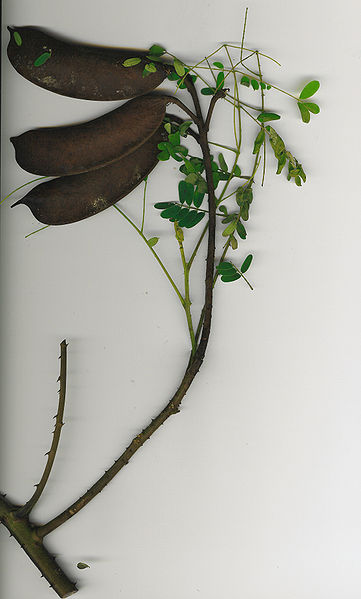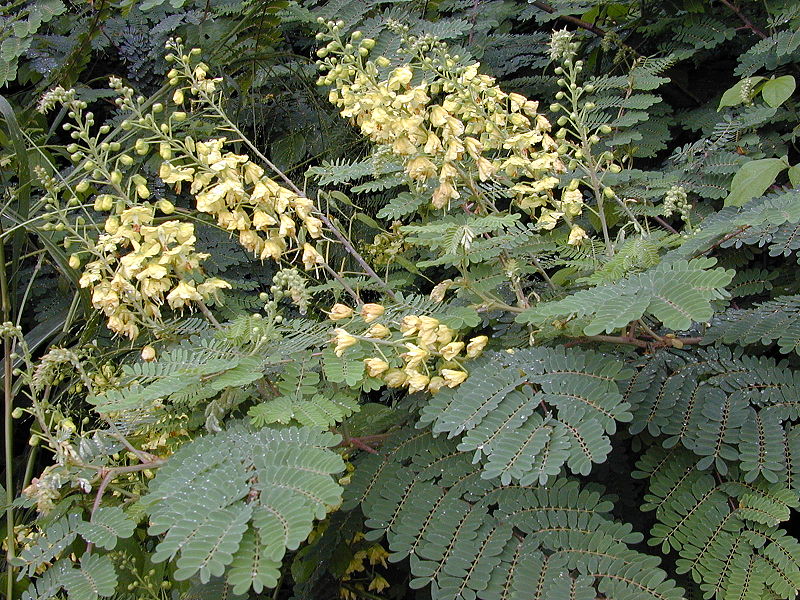 |
|
http://www.hear.org/starr/ |
 |
| http://www.hear.org/starr/ |
Translate this page:
Summary
Physical Characteristics

 Caesalpinia decapetala is a deciduous Shrub growing to 3 m (9ft 10in).
Caesalpinia decapetala is a deciduous Shrub growing to 3 m (9ft 10in).
See above for USDA hardiness. It is hardy to UK zone 8. The species is hermaphrodite (has both male and female organs) and is pollinated by Insects.
It can fix Nitrogen.
Suitable for: light (sandy), medium (loamy) and heavy (clay) soils and prefers well-drained soil. Suitable pH: mildly acid, neutral and basic (mildly alkaline) soils and can grow in very alkaline soils.
It cannot grow in the shade. It prefers moist soil.
UK Hardiness Map
US Hardiness Map
Synonyms
C. sepiaria. Roxb.
Plant Habitats
Woodland Garden Sunny Edge; Dappled Shade; Hedge;
Edible Uses
References More on Edible Uses
Medicinal Uses
Plants For A Future can not take any responsibility for any adverse effects from the use of plants. Always seek advice from a professional before using a plant medicinally.
Anthelmintic Antiperiodic Astringent Emmenagogue Febrifuge Laxative Purgative
Anthelmintic, antiperiodic, astringent, febrifuge[158, 178]. The leaves are emmenagogue and laxative[240, 243]. They are applied externally to burns[240, 243]. The root is purgative[240, 243].
References More on Medicinal Uses
The Bookshop: Edible Plant Books
Our Latest books on Perennial Plants For Food Forests and Permaculture Gardens in paperback or digital formats.

Edible Tropical Plants
Food Forest Plants for Hotter Conditions: 250+ Plants For Tropical Food Forests & Permaculture Gardens.
More

Edible Temperate Plants
Plants for Your Food Forest: 500 Plants for Temperate Food Forests & Permaculture Gardens.
More

More Books
PFAF have eight books available in paperback and digital formats. Browse the shop for more information.
Shop Now
Other Uses
Hedge Hedge Tannin Wood
The bark is a rich source of tannin[158, 272]. Plants are often grown as field boundaries in Nepal[272]. An excellent hedge plant[240]. However, due to its doubtful hardiness it is not a good candidate for this use in Britain. Wood - moderately hard[146]. Environmental Uses include:
Agroforestry;
Boundary, barrier or support;
Soil improvement. It is used as an Ornamental.
Special Uses
Hedge Hedge Nitrogen Fixer
References More on Other Uses
Cultivation details
Requires a sunny position[11], succeeding in any moderately fertile well-drained soil[200] including limy soils[182]. This species is on the borderline of hardiness in Britain. However, C. japonica, which is considered to be no more than a variety of this species by many botanists, succeeds on a wall at Wisley to the west of London and is said to be hardy to about -10°c[184]. Its natural range is Japan where it grows at heights up to 2000 metres on rocky mountain slopes in the cooler regions of the country[11, 200]. Plants in this genus are notably resistant to honey fungus[200]. This species has a symbiotic relationship with certain soil bacteria, these bacteria form nodules on the roots and fix atmospheric nitrogen. Some of this nitrogen is utilized by the growing plant but some can also be used by other plants growing nearby[200]. It has a special soil tolerance for shallow soils.
References Carbon Farming Information and Carbon Sequestration Information
Temperature Converter
Type a value in the Celsius field to convert the value to Fahrenheit:
Fahrenheit:
The PFAF Bookshop
Plants For A Future have a number of books available in paperback and digital form. Book titles include Edible Plants, Edible Perennials, Edible Trees,Edible Shrubs, Woodland Gardening, and Temperate Food Forest Plants. Our new book is Food Forest Plants For Hotter Conditions (Tropical and Sub-Tropical).
Shop Now
Plant Propagation
Seed - pre-soak for 12 - 24 hours in warm water and sow in a greenhouse in early spring[200]. When large enough to handle, prick the seedlings out into individual pots and grow them on in the greenhouse for at least their first winter, planting them out into their permanent positions in late spring or early summer, after the last expected frosts. Softwood cuttings in sand in a frame[200].
Other Names
If available other names are mentioned here
Cat’s claws; cat's-claw; Mauritius-thorn; thorny poinciana; wait-a-bit; wait-a-while; woody wait-a-while. Spanish: agarra ladrón; chembé bolé; chícara cimarrona; zarza de cercas. French: brésillet du Japon; césalpinie du Japon. Chinese: yun shi. Australia: Mauritius thorn; shoofly; tiger stopper; whoa back. Germany: Cäsalpinie, Japanische; Mauritius-dorn. Haiti: chembe bolo; ti-janvier; tijavier. Indian Punjab: aila; chillari; gilo; karur; kurutu-gajjika; relan. Indonesia: areuy matahiyang gunung. Italy: cesalpinia giapponese. Japan: jaketsu-ibara. Lesser Antilles: arrête-boeuf; caniroc. Myanmar: sukyanbo. Nusa Tenggara: secang lembut. South Africa: kraaldoring (Afrikaans); ubobo-encane (Zulu); ufenisi. Thailand: kamchai. Vietnam: vu'ôt hùm.
Native Range
TEMPERATE ASIA: China (except w. & n.e.), Korea, Japan TROPICAL ASIA: Bangladesh, Bhutan, India, Sri Lanka, Nepal, Pakistan, Laos, Myanmar, Thailand, Vietnam, Indonesia, Malaysia, Philippines
Weed Potential
Right plant wrong place. We are currently updating this section.
Please note that a plant may be invasive in one area but may not in your area so it's worth checking.
This plant can be weedy or invasive. Introduced to Fiji, French Polynesia, Hawai‘i, New Caledonia, Norfolk Island, Australia, China, Japan, Korea, Indonesia, Malaysia, Philippines, Thailand, Vietnam, Mauritius, Réunion, Rodrigues, Kenya and South Africa. It has become a seriously problematic invasive species in many locations. A category 1 weed in South Africa where it is invasive in forest edges and clearings, in manged plantations and along roads and rivers/streams. In Australia, it is classed as a noxious weed (category W2) in New South Wales, where legislation states that it must be completely controlled and destroyed, and is prohibited in Western Australia until a weed risk assessment has been completed.
Conservation Status
IUCN Red List of Threatened Plants Status : This taxon has not yet been assessed.

Growth: S = slow M = medium F = fast. Soil: L = light (sandy) M = medium H = heavy (clay). pH: A = acid N = neutral B = basic (alkaline). Shade: F = full shade S = semi-shade N = no shade. Moisture: D = dry M = Moist We = wet Wa = water.
Now available:
Food Forest Plants for Mediterranean Conditions
350+ Perennial Plants For Mediterranean and Drier Food Forests and Permaculture Gardens.
[Paperback and eBook]
This is the third in Plants For A Future's series of plant guides for food forests tailored to
specific climate zones. Following volumes on temperate and tropical ecosystems, this book focuses
on species suited to Mediterranean conditions—regions with hot, dry summers and cool, wet winters,
often facing the added challenge of climate change.
Read More
Expert comment
Author
(Roth.)Alston.
Botanical References
11200
Links / References
For a list of references used on this page please go here
Readers comment